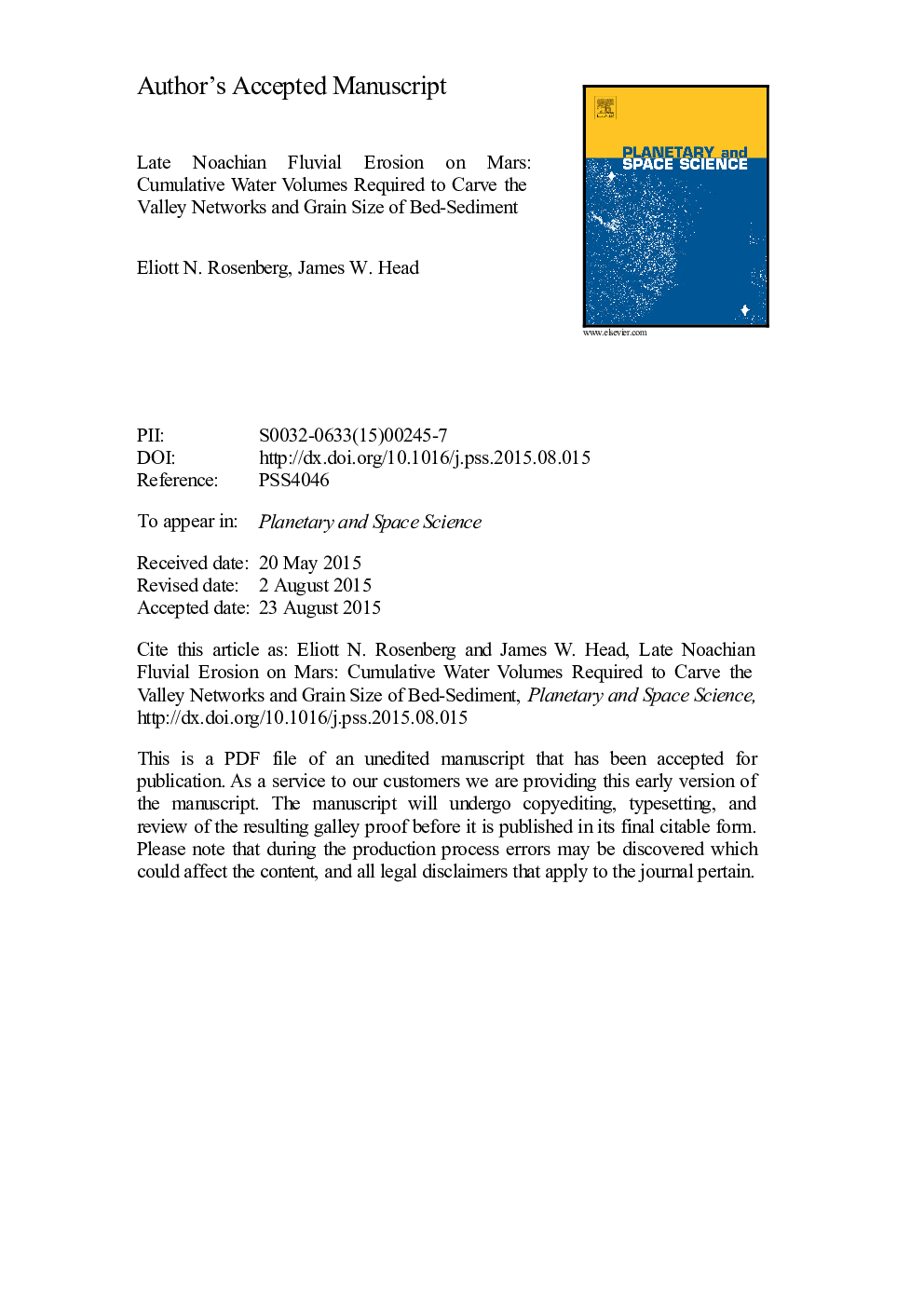| کد مقاله | کد نشریه | سال انتشار | مقاله انگلیسی | نسخه تمام متن |
|---|---|---|---|---|
| 8143149 | 1523923 | 2015 | 17 صفحه PDF | دانلود رایگان |
عنوان انگلیسی مقاله ISI
Late Noachian fluvial erosion on Mars: Cumulative water volumes required to carve the valley networks and grain size of bed-sediment
ترجمه فارسی عنوان
فرسایش فوری نواحی در مریخ: حجم آب تجمعی مورد نیاز برای برش شبکه های دره و اندازه دانه بستر
دانلود مقاله + سفارش ترجمه
دانلود مقاله ISI انگلیسی
رایگان برای ایرانیان
کلمات کلیدی
مریخ، آب و هوا، اواخر نوحه، شبکه های دره هیدرولوژی، حجم آب،
موضوعات مرتبط
مهندسی و علوم پایه
علوم زمین و سیارات
فیزیک زمین (ژئو فیزیک)
چکیده انگلیسی
Our goal is to quantify the cumulative water volume that was required to carve the Late Noachian valley networks on Mars. We employ an improved methodology in which fluid/sediment flux ratios are based on empirical data, not assumed. We use a large quantity of data from terrestrial rivers to assess the variability of actual fluid/sediment flux sediment ratios. We find the flow depth by using an empirical relationship to estimate the fluid flux from the estimated channel width, and then using estimated grain sizes (theoretical sediment grain size predictions and comparison with observations by the Curiosity rover) to find the flow depth to which the resulting fluid flux corresponds. Assuming that the valley networks contained alluvial bed rivers, we find, from their current slopes and widths, that the onset of suspended transport occurs near the sand-gravel boundary. Thus, any bed sediment must have been fine gravel or coarser, whereas fine sediment would be carried downstream. Subsequent to the cessation of fluvial activity, aeolian processes have partially redistributed fine-grain particles in the valleys, often forming dunes. It seems likely that the dominant bed sediment size was near the threshold for suspension, and assuming that this was the case could make our final results underestimates, which is the same tendency that our other assumptions have. Making this assumption, we find a global equivalent layer (GEL) of 3-100Â m of water to be the most probable cumulative volume that passed through the valley networks. This value is similar to the â¼34Â m water GEL currently on the surface and in the near-surface in the form of ice. Note that the amount of water required to carve the valley networks could represent the same water recycled through a surface valley network hydrological system many times in separate or continuous precipitation/runoff/collection/evaporation/precipitation cycles.
ناشر
Database: Elsevier - ScienceDirect (ساینس دایرکت)
Journal: Planetary and Space Science - Volume 117, November 2015, Pages 429-435
Journal: Planetary and Space Science - Volume 117, November 2015, Pages 429-435
نویسندگان
Eliott N. Rosenberg, James W. Head, III,
